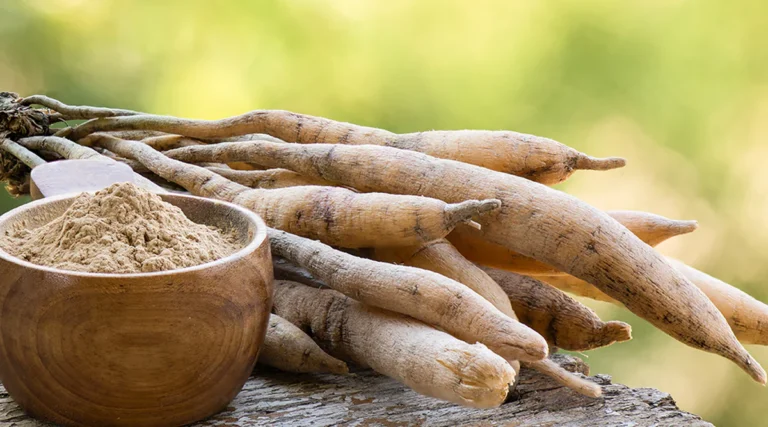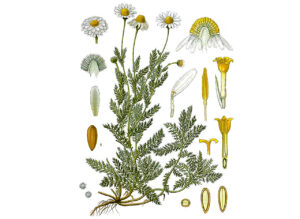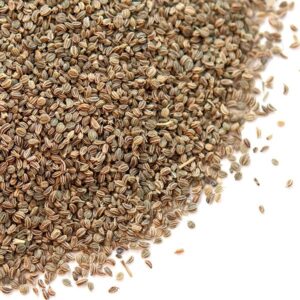Shatavari: The Queen of Herbs for Women’s Health in Ayurveda
Shatavari (Asparagus racemosus) is a highly revered herb in Ayurveda, often referred to as the “queen of herbs” due to its powerful effects on female health. Known for its adaptogenic, rejuvenating, and nourishing properties, Shatavari is used to balance the body, support the immune system, and particularly enhance reproductive health. In this post, we will explore how Shatavari fits into the key Ayurvedic categories and how you can use it to improve your well-being.
1. Shatavari and Dosha Balancing
In Ayurveda, herbs are categorized to balance the three doshas: Vata, Pitta, and Kapha. Shatavari primarily supports Vata and Pitta imbalances, particularly for individuals with dry, low energy, and reproductive system concerns.
- Vata Balancing Herb
- Vata dosha governs movement, energy, and dryness in the body. When Vata is imbalanced, it can lead to issues like dry skin, anxiety, constipation, and irregular menstrual cycles.
- Shatavari is a powerful herb to balance Vata due to its nourishing and moistening properties. It is ideal for people experiencing dryness in the body or mind, and it supports reproductive health by calming nervous tension.
- How it works: By pacifying Vata, Shatavari helps in improving digestion, enhancing moisture levels in the body, and maintaining hormonal balance.
- Pitta Balancing Herb
- Pitta governs heat, metabolism, and transformation. When Pitta is aggravated, it leads to conditions like inflammation, acidity, and skin rashes.
- Shatavari also has cooling properties, making it useful for balancing Pitta. It can help soothe inflammation in the digestive tract and support the liver.
- How it works: It helps reduce the heat in the body, preventing Pitta-related imbalances, and can be beneficial for individuals with stress-induced digestive issues.
2. Shatavari Based on Actions (Gunas)
Ayurvedic herbs are classified based on their properties, or Gunas. Shatavari belongs to several important categories due to its ability to support the reproductive system, balance doshas, and enhance vitality.
- Rejuvenating Herbs (Rasayana)
- Shatavari is considered a Rasayana, or rejuvenating herb, because it nourishes the body, strengthens immunity, and promotes overall vitality.
- How it works: It revitalizes the body and mind, making it a great herb for individuals dealing with exhaustion or stress. Shatavari is especially beneficial for women as it supports the reproductive system and enhances fertility.
- Anti-inflammatory Herbs
- Shatavari is known for its anti-inflammatory properties, especially useful for calming inflammation in the reproductive organs, digestive tract, and skin.
- How it works: It helps reduce swelling, soothes pain, and is often used for conditions like ulcers, gastritis, and menstrual cramps.
- Digestive Herbs (Agni Enhancers)
- While Shatavari is not primarily known for its digestive properties, it does support Agni (digestive fire) by nourishing the digestive system and promoting balanced elimination.
- How it works: Shatavari’s soothing properties calm the digestive system and prevent discomfort caused by imbalances such as bloating or constipation.
3. Shatavari Based on Therapeutic Functions
Shatavari provides numerous therapeutic benefits, particularly for the reproductive system, but it also supports general wellness.
- Immune System Support
- Shatavari is highly beneficial for the immune system due to its adaptogenic properties. It enhances the body’s natural defenses, helping to prevent illnesses.
- How it works: By promoting a healthy immune response, Shatavari strengthens the body’s ability to fight infections and manage stress.
- Nervine Tonics (For the Nervous System)
- Shatavari is considered a nervine tonic, providing nourishment and calm to the nervous system. It can help with stress, anxiety, and general mental exhaustion.
- How it works: It helps reduce anxiety, enhances mental clarity, and supports overall emotional well-being by calming the nervous system.
- Women’s Health
- Shatavari is most commonly used to support women’s health, especially in regulating menstrual cycles, enhancing fertility, and relieving symptoms of PMS and menopause.
- How it works: It acts as a tonic for the female reproductive system, supporting hormone balance, fertility, and easing menstrual cramps or menopause symptoms.
4. Shatavari Based on the Part of the Plant Used
In Ayurveda, herbs are often categorized by the part of the plant used. For Shatavari, the roots are the most commonly used part.
- Roots
- The roots of Shatavari are the primary medicinal part used in Ayurvedic preparations. They contain the active compounds that provide Shatavari’s healing effects.
- Why it’s used: The root is rich in saponins, alkaloids, and other bioactive compounds that help rejuvenate the body, balance hormones, and improve digestive health.
5. Shatavari in Different Dosage Forms
Shatavari is available in various forms to suit different needs and preferences. It is used both internally and externally, in powders, capsules, syrups, and pastes.
- Powders (Churna)
- Shatavari powder is one of the most common forms. It can be mixed with water, milk, or honey to make a nourishing drink.
- How to use: A teaspoon of Shatavari powder can be added to warm milk or water, promoting fertility, hormone balance, and overall rejuvenation.
- Tablets (Vati)
- Shatavari is available in tablet form, which is convenient for regular consumption and easy dosage.
- How to use: Take Shatavari tablets daily, as directed, to support hormonal balance and reproductive health.
- Liquids (Asava, Arishta)
- Shatavari is also available in liquid form, often mixed with other herbs to create a soothing tonic for women’s health.
- How to use: Shatavari liquid formulations are often taken in small doses for improving vitality and hormonal health.
- Oils (Taila)
- Shatavari oil is used in external applications, such as massage or hair care treatments.
- How to use: The oil can be used in Ayurvedic massage to calm the body or applied to the scalp for nourishing hair growth.
6. Conclusion: Shatavari – A Vital Herb for Women’s Health
Shatavari is a powerful herb that plays a vital role in maintaining overall health, especially in supporting the female reproductive system. Its rejuvenating, anti-inflammatory, and immune-boosting properties make it an essential part of Ayurvedic health practices. Whether you’re seeking to balance hormones, enhance fertility, or improve general well-being, Shatavari is a remarkable ally in promoting vitality and health.
Key Takeaways:
- Vata and Pitta Balancing: Ideal for balancing dryness, irregularities, and inflammation.
- Rasayana (Rejuvenating): Supports overall vitality and longevity.
- Anti-inflammatory: Helps reduce inflammation in the body.
- Digestive Support: Calms the digestive system and improves absorption.
- Immune and Nervine Tonic: Strengthens immunity and calms the nervous system.
- Women’s Health: Supports menstrual health, fertility, and hormonal balance.




